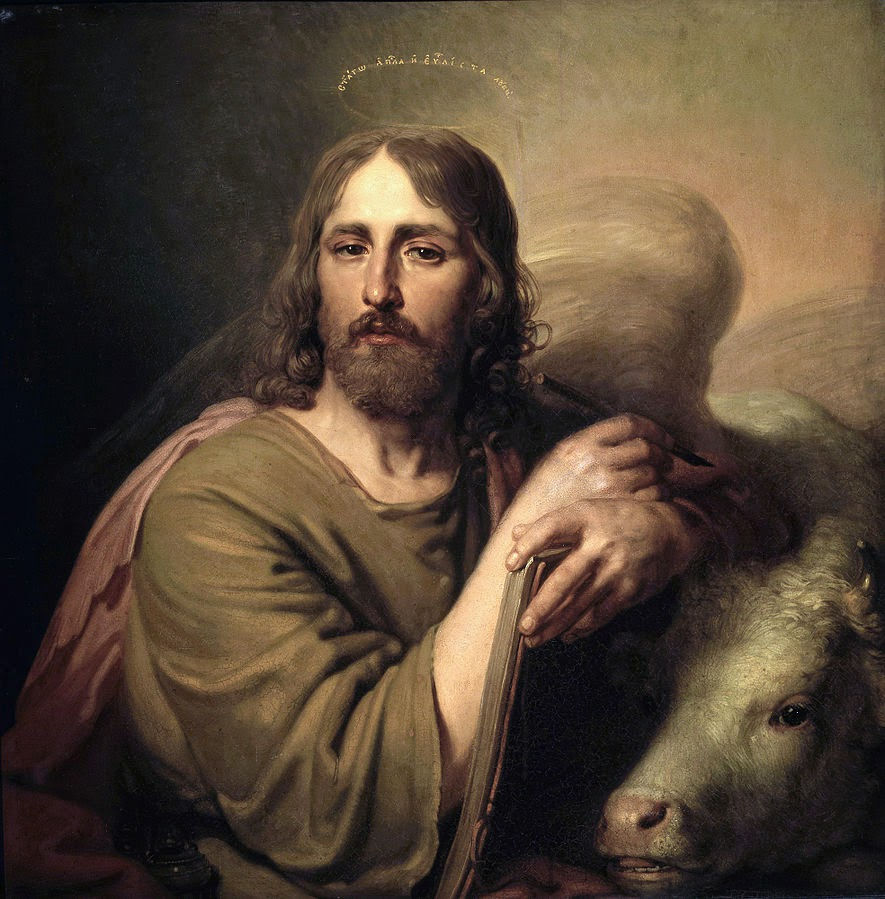St. Luke the Evangelist
Time Period:
1st Century
Feast Day:
October 18
Title/Attributes:
Evangelist
Location of Relic:
Main Reliquary - Left Section
Type of Relic:
Bones

St. Luke the Evangelist is one of the four Gospel writers and is the author of the Acts of the Apostles. St. Luke, a physician by trade, is believed to have been a Greek Gentile from Antioch (Modern Turkey).
Luke was a convert to the new faith and accompanied St. Paul on his second missionary journey (c. 51). He remained six years in Philippi, Greece and went on the third missionary journey, the journey to Italy that included the famous shipwreck off the coast of Malta. He remained with Paul during Paul’s imprisonment.
Paul wrote of Luke three times in the New Testament. St. Paul confirms that Luke practiced medicine in Colossians 4:14: “Luke, the beloved physician, sends you his greetings.” He mentions that Luke is accompanying him in 2 Timothy 4:11: “Only Luke is with me” and in Philemon 24: “as do Mark, Aristarchus, Demas, Luke, my fellow workers.”
It is also possible to deduce Luke’s presence with Paul on the missionary journeys from numerous passages in Acts (16:10-17; 20:5-21:18;27:1-28:16).
When St. Paul was martyred in 66, Luke went back to Greece, where he is believed to have died at the age of eighty-four “full of the Holy Spirit.”
Luke’s Gospel was written between 70-85 AD, possibly in Greece, although Eusebius claims that it was written before the martyrdom of St. Paul in 66 AD. The point of view of the Gospel is that of a Gentile Christian for other Gentile (or non-Jewish) individuals.
The Acts of the Apostles was written perhaps in Rome, either during the imprisonment of St. Paul or immediately after his death, or in the province of Achaea, in the area around Greece. The Acts details the Church from c. 35-63 AD, demonstrating in often superb prose the remarkable growth and the witness of the faithful.
Luke is also the patron saint of painters. It is said that he painted portraits of the Blessed Virgin Mary, whom he visited while they were both still living.
There exist multiple traditions surrounding what happened to the original icon(s) that St. Luke wrote. One ancient account explains how during the 5th century a Byzantine Empress brought from Jerusalem to Constantinople an icon attributed to St. Luke. The Hodegon Monastery was built to enshrine it and later all copies of this icon became known as Hodegetria. Most believe the original image was lost during the Middle Ages.
Whatever truth there is behind these traditions, here are a few more widely known icons attributed to St. Luke.
Our Lady of Vladimir
According to Russian sources the original Hodegetria was transferred from Constantinople to Vladimir in 1115 and remains one of the most popular images of the Virgin Mary in Russia.
Our Lady of Czestochowa
A popular account relates how in the 4th century St. Helena discovered an image of the Virgin Mary that was painted by St. Luke on a tabletop made by Jesus. She gave it to Constantine and it ended up in Constantinople. After that the image was eventually owned by Charlemagne, who gave it to Prince Leo of Ruthenia. By the 14th century the image was transferred to Jasna Gora in Poland in response to a request from Prince Ladislaus and remains there to this day.
Salus Populi Romani
Similar to Our Lady of Czestochowa, it is believed this image was discovered by St. Helena and taken first to Constantinople. By the 6th century the image was transferred to Rome and ever since has been enshrined in the church of Saint Mary Major. It is this image, known as "Protectress of the Roman People," before which Pope Francis prays and offers flowers each time he leaves Rome for a pontifical journey and again when he returns.
Our Lady of Perpetual Help
This particular icon is believed to be a replica of the original Hodegetria image in Constantinople. One story explains how the image was later enshrined in Crete, but then a thief stole the miraculous image from a monastery, bringing it to Rome in the 15th century. It is now located in the Church of St. Alphonsus Liguori in Rome.
"4 Icons of Mary Attributed to St. Luke the Evangelist." Aleteia, 18 Oct. 2017, https://aleteia.org/2017/10/18/4-icons-of-mary-attributed-to-st-luke-the-evangelist. Accessed 21 May 2025.
